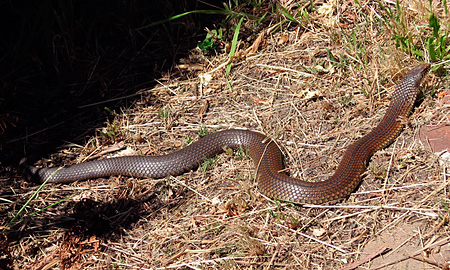Introduction
When it involves poisonous snakes, Australia is home to several of one of the most interesting and dangerous types on the planet. http://rylantbcn059.huicopper.com/emergency-treatment-administration-of-snake-bites-ideal-practices-for-every-circumstance Amongst these, the Tiger Snake stands out not just for its potent venom but also for its appealing habits. Comprehending the behavior of venomous serpents like the Tiger Snake is crucial for both wild animals fanatics and those staying in areas where these serpents exist. This short article delves into various elements of Tiger Serpent habits, environment, recognition, safety measures, and emergency treatment practices in case of a snake bite.
Understanding the Actions of Venomous Snakes Like the Tiger Snake
The Tiger Snake, medically called Notechis scutatus, is well-known for its hostile nature when intimidated. These snakes display a series of actions that can be quite different from their non-venomous equivalents.

Characteristics of Tiger Snakes
The Tiger Snake is easily identifiable as a result of its distinctive bands or red stripes that look like a tiger's markings. They can vary in shade from yellowish-brown to dark olive or black. This pigmentation serves not just as camouflage however also as a caution signal to prospective predators.
Adaptability to Environment
One impressive aspect of their habits is their adaptability to different settings. Discovered mainly in coastal regions, marshes, and wetlands across Australia and Tasmania, they can prosper in varied environments including city locations.
Hunting Techniques
Tiger Serpents are ambush predators primarily feeding on fish, frogs, and small creatures. They have keen sight and an intense feeling of scent which assists them in finding victim effectively.
Venom Composition
Their poison has neurotoxins that influence the nerve system, causing paralysis or death in smaller animals. For people, instant medical interest is critical after a tiger serpent bite because of its possibly lethal effects.
Natural Environment of Tiger Snakes
Preferred Locations
Understanding where these snakes stay clarify their behavior patterns. The tiger serpent habitat includes:
- Coastal regions Swamps Grasslands Urban areas with abundant water sources
Seasonal Movements
During warmer months, Tiger Snakes are extra active as they indulge in sunshine or hunt for food. In contrast, colder months see them retreating into hibernation sites.
Are Tiger Snakes Venomous?
Yes! The inquiry "are tiger serpents poisonous?" commonly arises amongst those unfamiliar with this species. Their venom is considered one of the most dangerous amongst all snake species worldwide.

Symptoms of a Tiger Serpent Bite
If bitten by a tiger serpent, symptoms might include:
- Localized pain Swelling at the bite site Nausea and vomiting Sweating and confusion
Immediate clinical help is important as unattended bites can lead to severe health and wellness issues or even death.
First Help for Serpent Bites: Quick Action Guide
Knowing just how to carry out first aid for a serpent bite could conserve someone's life. Below's what you should do:
Step 1: Remain Calm
Keeping calmness aids decrease heart rate which decreases poison spread.
Step 2: Immobilize the Influenced Area
Keep the affected arm or leg still and below heart degree if possible.
Step 3: Call Emergency Services
Always look for professional medical aid right away after a serpent bite.
First Help for Snake Bite Package Essentials
A well-appointed snake bite first aid kit ought to consist of:
- A compression bandage Antiseptic wipes A set of scissors An ice bag
Safety Preventative measures: Protecting against Snake Bites in Australia
Awareness Programs
Educating communities about local serpent types and their behaviors can significantly decrease encounters bring about bites.
Avoiding Unsafe Areas
Staying far from long yard throughout warmer months minimizes contact with snakes that may be relaxing or hunting.
Common False impressions Concerning Tiger Snakes
Many individuals think misconceptions regarding the actions of tiger serpents result in unneeded concern. Below are some clarifications:
Myth 1: All Tigers Are Aggressive
Not all tiger snakes will present aggression if left uninterrupted; several favor taking off instead of confrontation.

Myth 2: They Chase Humans
Tiger snakes do not actively chase human beings; they might strike when they really feel threatened yet will generally pull back if offered space.
Conservation Efforts Associated with Venomous Snakes
Conservation Snakebite first aid initiatives focus on enlightening communities concerning shielding neighborhood wildlife while Have a peek here lessening human-snake interactions.
Importance of Ecosystems
Understanding that venomous snakes play a vital duty in keeping environmental balance helps foster recognition as opposed to fear towards them.
FAQs Regarding Tiger Snakes
What needs to I do if I experience a tiger snake?- Maintain distance and slowly pull back without abrupt movements.
- While attacks aren't incredibly usual as a result of awareness initiatives, they still occur every year within Australia.
- Baby tiger snakes can supply full doses of poison regardless of being smaller; hence care is suggested around them.
- They primarily take in frogs, fish, little mammals like rodents, and other reptiles.
- It's illegal in the majority of jurisdictions without proper licensing because of security issues regarding their venom.
- Wear sturdy boots and remain on significant routes; appearance before putting hands or feet into concealed areas like rocks or logs.
Conclusion
Understanding the habits of poisonous snakes like the Tiger Serpent not just enhances our expertise but also promotes safety awareness amongst those living near their habitats. From identifying their features, comprehending emergency treatment protocols adhering to a bite, via engaging preservation initiatives-- every element plays a crucial role in fostering coexistence with these interesting reptiles while respecting their location within our ecosystem.
As we deepen our understanding via education and experience, we add favorably towards ensuring both human safety and security and wildlife preservation-- benefitting all parties involved!